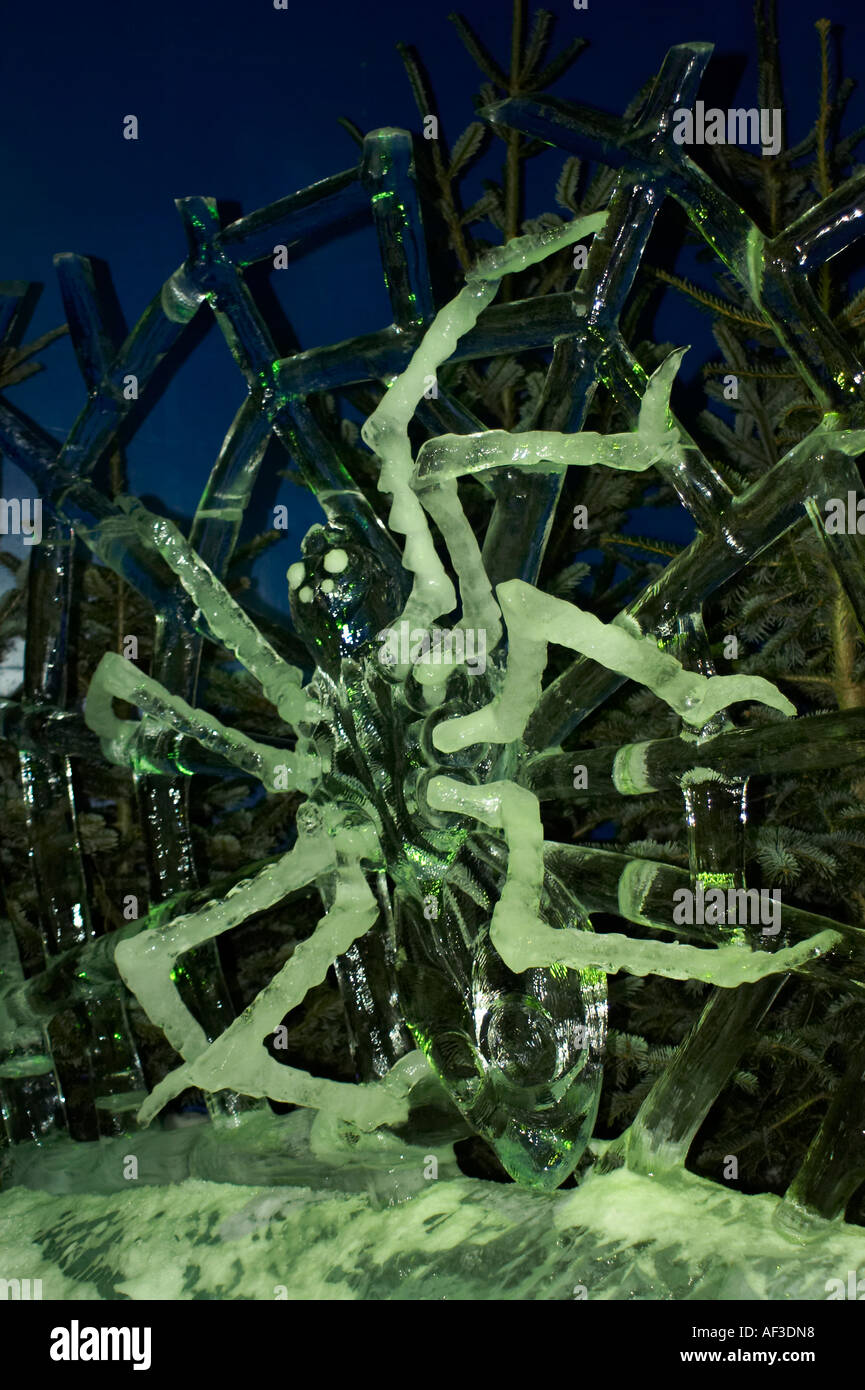Ice sculptures. Spider

Image details
Contributor:
Piotr & Irena Kolasa / Alamy Stock PhotoImage ID:
AF3DN8File size:
52.6 MB (1.8 MB Compressed download)Releases:
Model - no | Property - noDo I need a release?Dimensions:
3498 x 5256 px | 29.6 x 44.5 cm | 11.7 x 17.5 inches | 300dpiMore information:
Ice Sculptures. When talking about icy sculptures we think of constructing magnificent statues made of ice. These result from the creativity and the craft talent of artists who make use of specific techniques. Ice sculptures are used as smaller decorative pieces for a banquet, but it is also possible to model huge buildings. What kind of ice is used for the Ice World's sculptures? The literal definition of ice is water in its solid state. Water only becomes solid when it is frozen. However, because the circumstances in which water freezes may vary, there are also different types of ice. The respective type of ice depends on the temperature of the ice and the pressure it undergoes. The lower the air content of the ice the more its colour changes from white to blue or blue-green. Therefore the colour of freshly frozen ice is white and the one in glaciers is often blue. For the construction of ice sculptures a special ice is needed. Those ice blocks are produced in vats made of stainless steel in which the water freezes bottom-up at a temperature of -30°C. The process of freezing takes from 3 days up to 6 weeks, depending on quality and size of the blocks. After the blocks have obtained their form they are loaded in cooling cells and then transported to the event location. The ice blocks' erection and stacking. When the ice blocks have reached the Ice World's hall, they are placed and stacked by means of bulldozers. This process is called `stacking´. The whole thing is an art of itself since it requires absolutely precise work. Afterwards, the ice blocks are fixated on top of each other with a mass made of water and snow. The weight of the respective ice block ensures the best adhesion. This stacking of ice blocks can be compared to building a wall; one stone rests on the other. The final creation or the "carving". As soon as this work is done the marking of the design begins. For this purpose there are different techniques: while one sculpture's artist puts immed